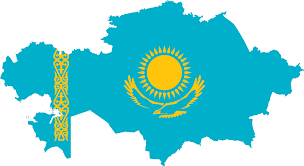Geographical position and Climate of Kazakhstan
Kazakhstan is located in Central Asia and Eastern Europe, bordered by Russia to the north, China to the east, Kyrgyzstan, Uzbekistan, and Turkmenistan to the south, and the Caspian Sea to the west. Spanning across a vast area of 2,724,900 square kilometers, it is the world’s largest landlocked country and the ninth-largest country in the total area.
The climate of Kazakhstan is continental, with hot summers and cold winters. Temperatures can be extremely varied, with summer temperatures soaring up to 30°C (86°F), while winter temperatures can drop to as low as -20°C (-4°F). However, these temperatures can vary significantly depending on the region. The country experiences a high variation in precipitation as well, with the northern regions receiving more rainfall compared to the arid and semi-arid conditions of the central and southern areas.
Brief History of Kazakhstan
Kazakhstan has a rich and diverse history that dates back to ancient times when it was inhabited by nomadic tribes. The region was historically part of the Silk Road trade route, which facilitated cultural and commercial exchanges between Asia and Europe.
In the early centuries, various Turkic and Mongol nomadic empires controlled the territory of present-day Kazakhstan. By the 13th century, the area became a part of the Mongol Empire under Genghis Khan. Later, it came under the control of the Golden Horde and subsequent Kazakh Khanate in the 15th century.
The Russian Empire began to expand into the region in the 18th century, and by the mid-19th century, Kazakhstan was fully integrated into the Russian Empire. Following the Russian Revolution in 1917, Kazakhstan became an autonomous republic within the Soviet Union and was later transformed into a full Soviet Socialist Republic.
During the Soviet era, Kazakhstan experienced significant industrialization and agricultural development, including the Virgin Lands Campaign initiated by Nikita Khrushchev. However, it also faced harsh policies, such as forced collectivization and political purges, as well as environmental disasters like the drying up of the Aral Sea.
Kazakhstan declared independence from the Soviet Union on December 16, 1991, becoming the last Soviet republic to do so. Nursultan Nazarbayev became the country’s first president, a position he held until his resignation in 2019. Since independence, Kazakhstan has worked to develop its economy, particularly its vast oil and mineral resources, and has played an active role in international affairs.
Religion of Kazakhstan
The predominant religion in Kazakhstan is Islam, with the majority of Muslims adhering to the Sunni branch, specifically the Hanafi school of jurisprudence. Islam was introduced to the region by Arab conquerors in the 7th and 8th centuries and became widely practiced among the nomadic tribes.
Orthodox Christianity is the second most practiced religion, primarily among the ethnic Russian population. The Russian Orthodox Church has a significant presence in the country.
Kazakhstan’s constitution guarantees freedom of religion and the government maintains a policy of secularism, where no religion is officially endorsed by the state. This has allowed for a diverse religious landscape where various faiths are practiced.

